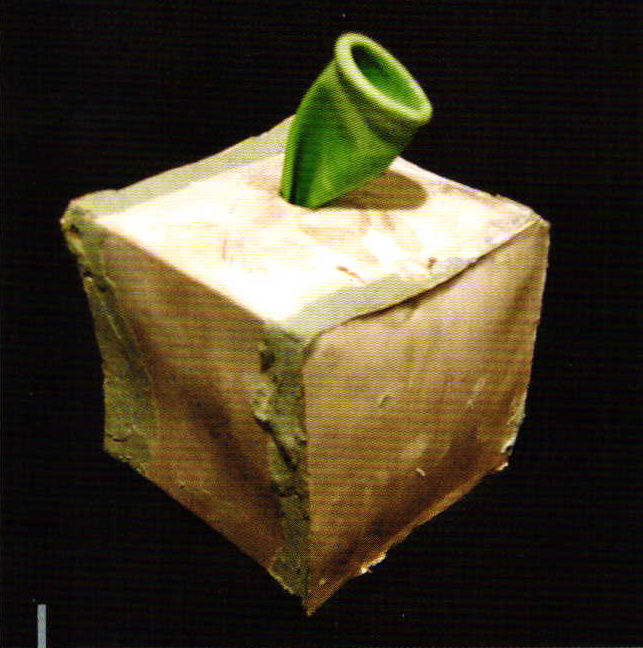Roots in the Past, The Future Ahead
3 Minute Read
A little piece of Sweden's industrial past is located in the South of the city center in Stockholm; it is currently being gentrified in order to create one of the most exciting new districts in the Swedish capital. Right at the center: the Konstfack University College of Arts, Crafts and Design.
The landmark in the district, the historical telephone factory owned by the telecommunications corporation Ericsson, has been since last year the new site of the Konstfack University College of Arts, Crafts and Design. Covering a surface space of over 20,000 square meters, the center of art and design is entirely housed within the fully modernized factory building.
The architects succeeded in transforming the rough industrial building with its formerly grey plant halls into a modern and expansive institute for 600 students in very different design courses. The Konstfack University College of Arts, Crafts and Design is the largest college of design and art in Sweden. The renowned art university gained its reputation due to strict admission criteria and concentration on small groups of students.
The range of subjects on offer in the bachelor and masters courses covers all standard areas of art and design such as graphic design, art, industrial design and interior design, but also includes more specific courses such as film and film animation, ceramics and glass, textile design and last but not least metal design for jewelry and sculpture.
All courses aim at initiating dialogue with artists and designers. This is why guest lecturers are frequently invited in order to teach in the internationally focused courses. They pass on to the students their extraordinary artistic opinions and their knowledge and encourage them to engage in critical appraisal. One of these artists is the Dutch jewelry designer Ruudt Peters. As a jewelry maker, he has left his mark on contemporary jewelry like no other. Peters has been in charge of the course in metal design since the start of the year; this course has been on offer at the Konstfack University for 25 years; he intends to breathe new life into it and set off for paths less trodden. Whereas Swedish design has a defining influence on architecture, furniture design and in interior design, Sweden has been isolated and unspectacular for many years in terms of the international jewelry scene, said the Dutchman. The only remarkable exception: The Stockholm-based goldsmith and designer Sigurd Persson, who lent his jewelry an extraordinary language of forms by pursuing simplicity and dynamics, is a known figure on the international jewelry scene.
Ruudt Peters intends to network between different nations, his home country and other European states and strengthen contacts in this way; this should bring the Swedish students closer to the possibilities of individual jewelry design. Swedish jewelry design remains dominated by the design style of the nineteen sixties, and even the younger generation draws on these influences today. Conversely, so-called "author jewelry" is less well known in Sweden. Peters believes that the jewelry scene is now nascent, and it is starting to reinterpret jewelry and to lend it an individual design. Throughout their entire studies, students are instructed to analyze in an introspective manner and to philosophize on their own personal points of view, formulating them to produce their ideas and draft jewelry.
The name of the course in metal design that the students and teachers chose together is extremely unusual yet very conclusive: Adellab. When translated, Adel means precious and Lab is of course the abbreviation for laboratory. Simply in its handling and performance, jewelry design is itself precious, while the work and the implementation take place in an environment akin to a laboratory. Ruudt Peters encourages his students to experiment in this laboratory as the learning process in experiments is more intensive and important than the end product. "The ends are the means and the means are the ends" is the motto in Adellab. Within this process, the students are availed of an instrument with which they can find their own path. Adellab, this small family of roughly 40 students and eight teachers, is a laboratory that stands for innovation and that sees itself as a source of development and enhancement. www.konstfack.se
by Susanne Heuer
You assume all responsibility and risk for the use of the safety resources available on or through this web page. The International Gem Society LLC does not assume any liability for the materials, information and opinions provided on, or available through, this web page. No advice or information provided by this website shall create any warranty. Reliance on such advice, information or the content of this web page is solely at your own risk, including without limitation any safety guidelines, resources or precautions, or any other information related to safety that may be available on or through this web page. The International Gem Society LLC disclaims any liability for injury, death or damages resulting from the use thereof.
The All-In-One Jewelry Making Solution At Your Fingertips
When you join the Ganoksin community, you get the tools you need to take your work to the next level.
Trusted Jewelry Making Information & Techniques
Sign up to receive the latest articles, techniques, and inspirations with our free newsletter.
